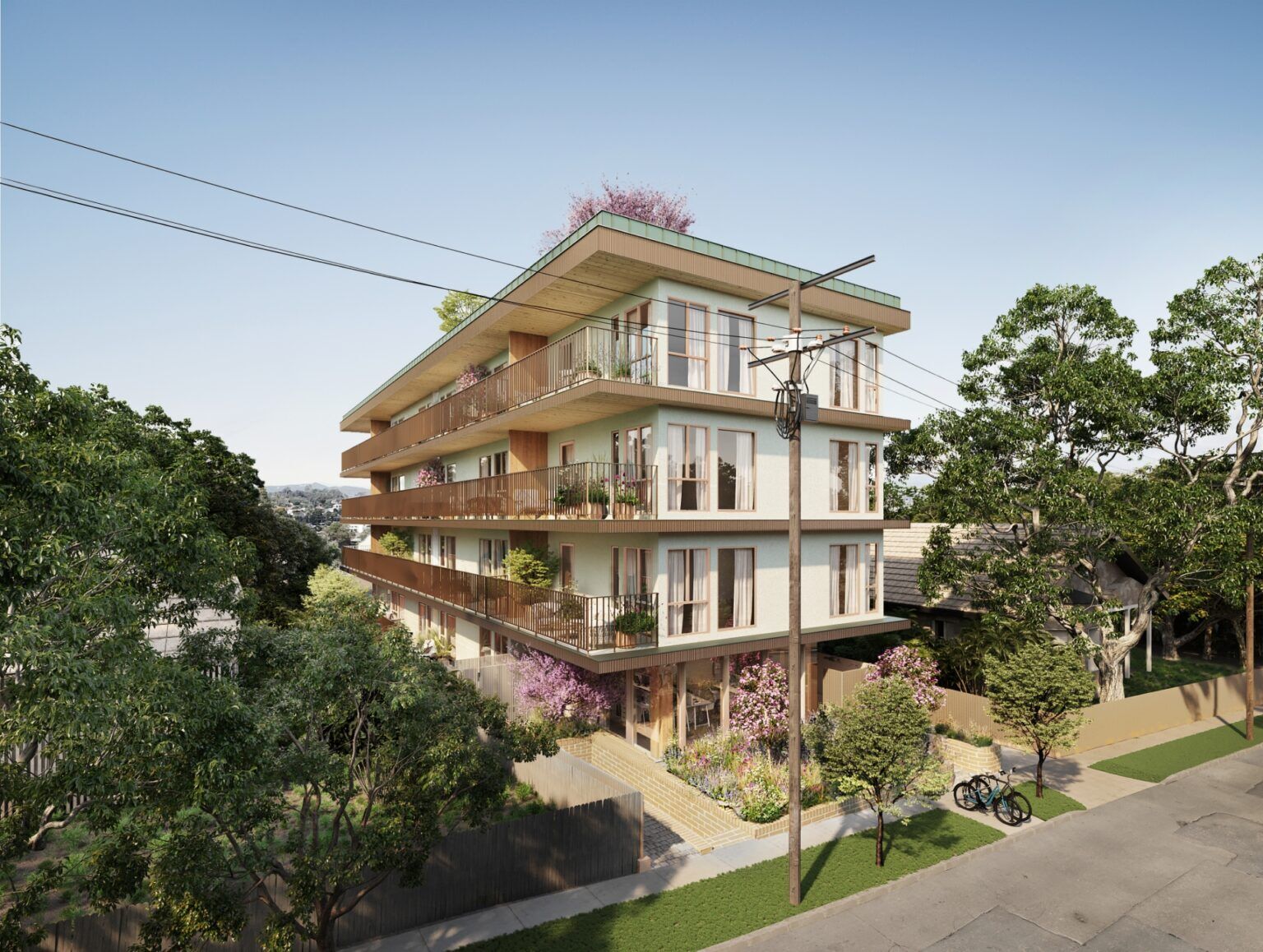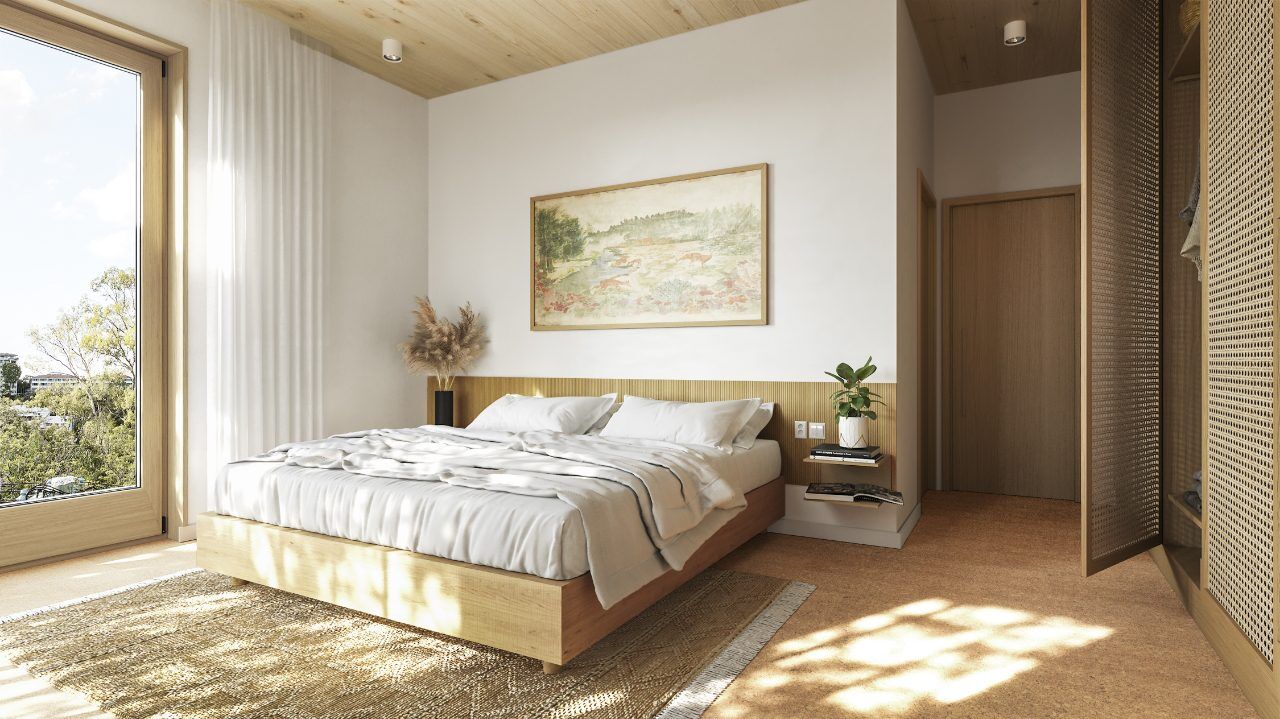Note: The following article and photos is from the website ThinkWood.com. It is put here on Arcata1.com as a starter, to begin thinking about the use of Mass Timber construction in three to six story buildings, such as we might find in the future of Arcata.
This particular article reads somewhat like an advertisement. There will be other articles on Mass Timber in the near future.
California Bungalow Meets 21st-Century Timber Technology


“We’re building the most streamlined, best housing product first, and then our goal is to introduce efficiencies across every stage of the development process, with a focus on off-site fabrication and the development of our products as a kit of parts.”
 To provide housing that’s highly appealing to potential residents, the SuperLA team is turning to a quintessentially Californian housing typology—the bungalow court—and reinterpreting it for the 21st century.
To provide housing that’s highly appealing to potential residents, the SuperLA team is turning to a quintessentially Californian housing typology—the bungalow court—and reinterpreting it for the 21st century.
This mid-century housing configuration was made popular in the Golden State by its cost-effective, rapid construction. Bungalow court developments feature an arrangement of small, self-contained houses clustered around a shared courtyard, and are valued by occupants looking for green space and a more communal experience.
“SuperBungalow takes inspiration from Silver Lake’s mid-century modern aesthetic and L.A.’s widely popular bungalow court typology, which dates back to as early as 1910 and features no shared walls, lots of light and air on all sides, large attached terraces, and thoughtfully designed interior layouts,” van Schaik says.
Although only 350 original examples remain in L.A., the bungalow court’s sense of community and camaraderie has made it one of the city’s most beloved and desirable housing styles. In fact, some of Walt Disney’s animators are said to have lived in the bungalow court at 2908 Griffith Park Boulevard — less than 8 miles from SuperLA’s Hyperion Avenue project—and its whimsical style likely inspired the dwarves’ cottages in Snow White and the Seven Dwarves.
A Customizable Mass Timber-Built Kit of Parts

The SuperBungalows will take full advantage of offsite factory-built panelization. Marathon Street was constructed with light-frame wood walls built on site and panelized CLT floors and roofs.
Hyperion Avenue properties will be assembled with light-frame prefab walls and five-ply CLT floors and roofs—all arriving at the sites using just-in-time sequencing and expected to go up in just four weeks.
The majority of CLT will be left exposed, and interiors will include custom built-in wood millwork and cabinetry.
“We are seeing a 25% reduction in cost per SuperBungalow home at Hyperion Avenue compared to Marathon Street due to the reduction in design and construction timelines and cost efficiencies achieved as a result of our prefab approach,” van Schaik says.
The learnings from these two projects will further evolve the SuperBungalow 1:1 and SuperBungalow 2:2 products, essentially giving SuperLA a customizable mass timber kit-of-parts to use for future projects.
“As we look to future projects, we expect to reduce our cost per SuperBungalow home by over 50% by incorporating more off-site manufacturing of our components and automation of our design and construction,” van Schaik says.
To design some of the first hybrid light-fame mass timber buildings in L.A., SuperLA and its structural engineering team John A. Martin & Associates, Inc. (JAMA) collaborated closely with city officials to work through any seismic, fire, and code concerns.
“There’s going to be a tendency to scrutinize more and ask a lot of questions as we are breaking new ground with these projects,” says Parbi Boodaghian, senior project engineer at JAMA. “Nonetheless, the city was keen to work with us on it.”
“We were able to show to the city that seismically, both buildings are built for a worst-case scenario, analyzing the CLT diaphragms as both flexible and rigid,” Boodaghian says. “With Marathon Street and Hyperion Avenue, we have set a good precedent for future mass timber projects in L.A.”

When it comes to expanding the use of low-carbon prefab mass timber systems, both the city and the Central City Association of Los Angeles (CCA)—an advocacy group focused on a vibrant downtown—are increasingly on board.
In 2019, CCA and JAMA published a white paper that demonstrated how prefab mass timber systems could offer a faster, more affordable, and more sustainable way to build housing in the city.
“It’s really great to be in a city like L.A. that appreciates sustainability. They’re forward-thinking and would like to see more of these types of projects in the future,” van Schaik says.
As for future residents of the two projects, SuperLA has a growing list of prospective renters.
“It’s definitely going to be really interesting to see what happens when these hit the market and people realize that rental units don’t have to be cold white boxes,” van Schaik says.
SuperLA’s Marathon Street and Hyperion Avenue projects are expected to be completed in the summer of 2023 and winter of 2024, respectively.

